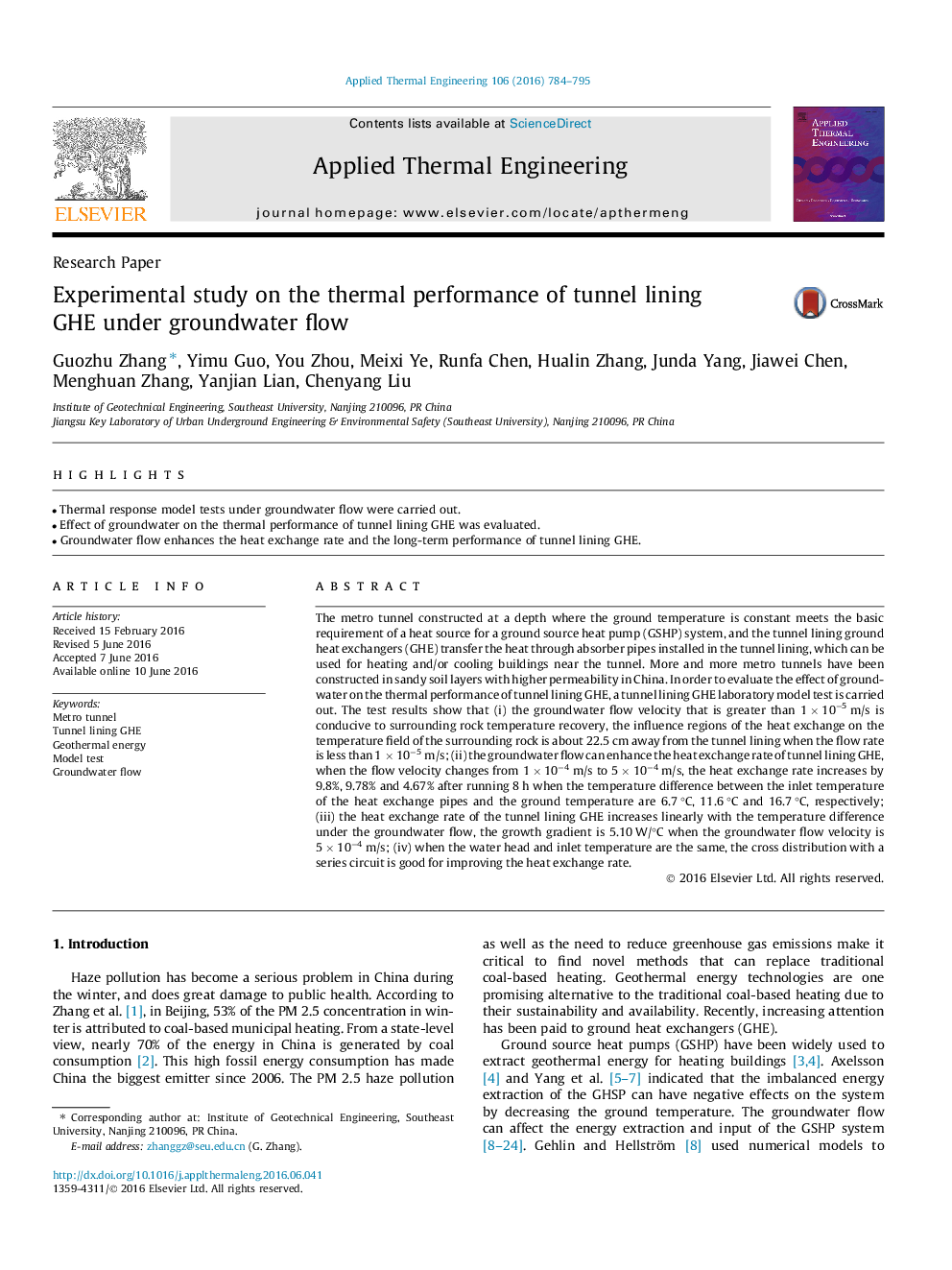| Article ID | Journal | Published Year | Pages | File Type |
|---|---|---|---|---|
| 7047474 | Applied Thermal Engineering | 2016 | 12 Pages |
Abstract
The metro tunnel constructed at a depth where the ground temperature is constant meets the basic requirement of a heat source for a ground source heat pump (GSHP) system, and the tunnel lining ground heat exchangers (GHE) transfer the heat through absorber pipes installed in the tunnel lining, which can be used for heating and/or cooling buildings near the tunnel. More and more metro tunnels have been constructed in sandy soil layers with higher permeability in China. In order to evaluate the effect of groundwater on the thermal performance of tunnel lining GHE, a tunnel lining GHE laboratory model test is carried out. The test results show that (i) the groundwater flow velocity that is greater than 1 Ã 10â5 m/s is conducive to surrounding rock temperature recovery, the influence regions of the heat exchange on the temperature field of the surrounding rock is about 22.5 cm away from the tunnel lining when the flow rate is less than 1 Ã 10â5 m/s; (ii) the groundwater flow can enhance the heat exchange rate of tunnel lining GHE, when the flow velocity changes from 1 Ã 10â4 m/s to 5 Ã 10â4 m/s, the heat exchange rate increases by 9.8%, 9.78% and 4.67% after running 8 h when the temperature difference between the inlet temperature of the heat exchange pipes and the ground temperature are 6.7 °C, 11.6 °C and 16.7 °C, respectively; (iii) the heat exchange rate of the tunnel lining GHE increases linearly with the temperature difference under the groundwater flow, the growth gradient is 5.10 W/°C when the groundwater flow velocity is 5 Ã 10â4 m/s; (iv) when the water head and inlet temperature are the same, the cross distribution with a series circuit is good for improving the heat exchange rate.
Related Topics
Physical Sciences and Engineering
Chemical Engineering
Fluid Flow and Transfer Processes
Authors
Guozhu Zhang, Yimu Guo, You Zhou, Meixi Ye, Runfa Chen, Hualin Zhang, Junda Yang, Jiawei Chen, Menghuan Zhang, Yanjian Lian, Chenyang Liu,
